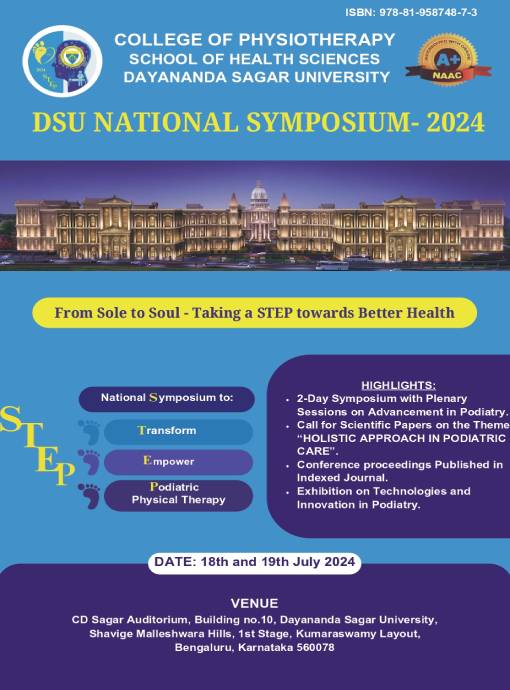Prevalence of Risk Factors for Knee Pain in Young Adult Professional Badminton Players at Selected Clubs of South Bengaluru – A Cross - Sectional Study
DOI:
https://doi.org/10.18311/DSUPHY/9788195874873/2024/053Keywords:
Badminton Player; Intrinsic Risk Factor; Knee PainAbstract
Background/Introduction: Badminton is a popular sport characterized by high-intensity movements, particularly in the lower extremities, which predispose players to knee injuries. Understanding intrinsic risk factors such as BMI, Q-angle, and Hamstring to Quadriceps (H:Q) ratio is crucial for injury prevention and optimizing performance among badminton players. Objective: This cross-sectional study aimed to determine the prevalence of intrinsic risk factors associated with knee pain among young adult professional badminton players in South Bengaluru. Method: A total of 45 young adult professional badminton players (mean age 23.4 ± 2.7 years; 51.1% male) were recruited using purposive sampling. Participants underwent assessments for BMI, Q-angle, and H:Q ratio. Data were analyzed using descriptive statistics to determine prevalence rates. Result: The study found that 13.3% of players were overweight or obese (BMI ≥ 25), placing them at increased risk for knee pain. Q-angle assessments revealed that 100% of male players and 97.8% of female players exhibited abnormal angles, indicating a predisposition to patellofemoral pain. Analysis of H:Q ratios showed that 35.6% of right knees and 46.7% of left knees had an increased H:Q ratio, potentially increasing the risk of knee instability and ACL injuries. Conclusion: This study highlights a significant prevalence of intrinsic risk factors for knee pain among young adult professional badminton players in South Bengaluru. Strategies focusing on weight management, biomechanical correction, and muscle balance are crucial for injury prevention and long-term player health in badminton.
 N. B. Shishira
N. B. Shishira
